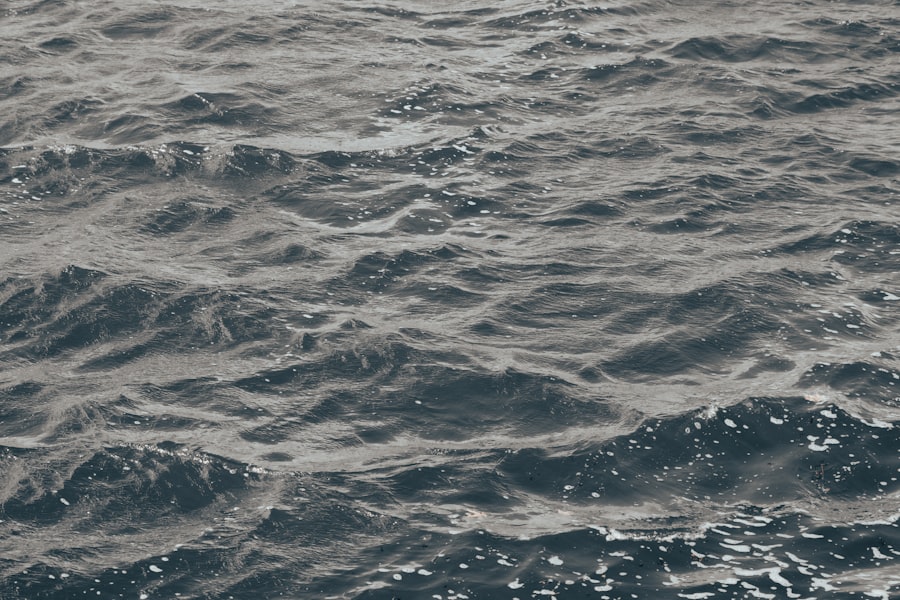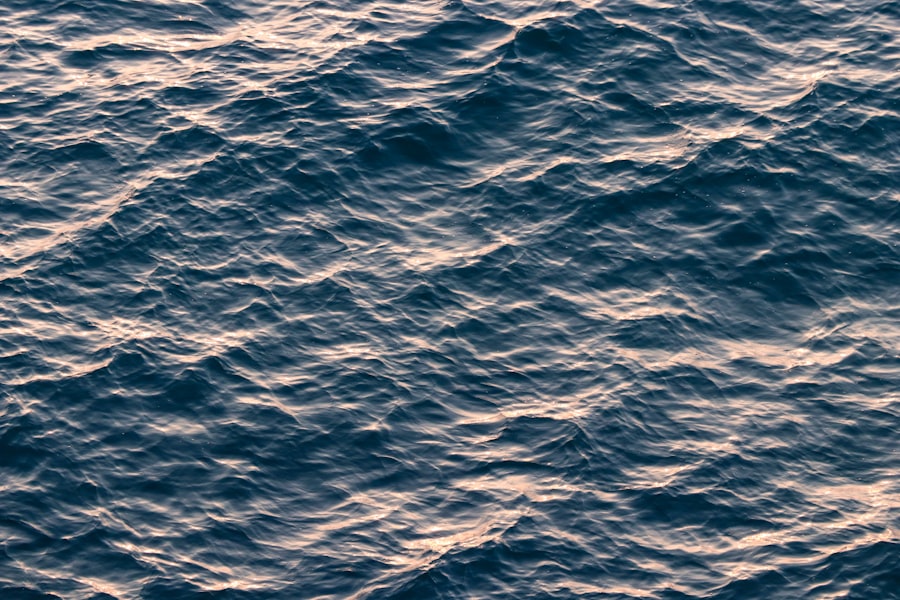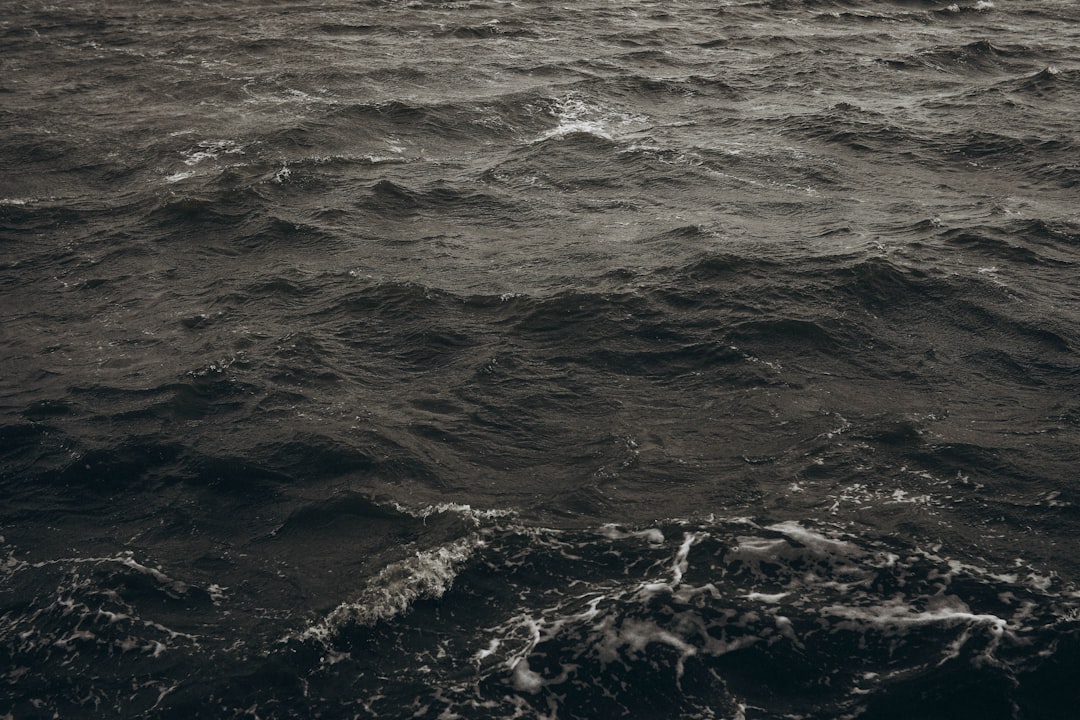The Drake Passage, a body of water situated between the southern tip of South America and Antarctica, is renowned for its tumultuous seas and rich maritime history. This narrow stretch of ocean, measuring approximately 800 kilometers (500 miles) wide, serves as a critical conduit for vessels traversing between the Atlantic and Pacific Oceans. Named after the English explorer Sir Francis Drake, who navigated these waters in the late 16th century, the passage has become synonymous with both adventure and peril.
Its unpredictable weather patterns and strong currents have earned it a reputation as one of the most challenging maritime routes in the world. The significance of the Drake Passage extends beyond its geographical location; it is a vital area for scientific research and ecological studies. The waters are teeming with marine life, making it an essential habitat for various species.
Additionally, the passage plays a crucial role in global ocean circulation, influencing climate patterns far beyond its immediate vicinity. As such, understanding the Drake Passage is not only important for navigators and adventurers but also for scientists and environmentalists who seek to comprehend its impact on the planet.
Key Takeaways
- The Drake Passage is a body of water between South America’s Cape Horn and the South Shetland Islands of Antarctica, known for its challenging sailing conditions.
- The Drake Passage has a rich historical significance as it was named after the English explorer Sir Francis Drake and has been a key route for explorers and expeditions to reach Antarctica.
- The geographical features of the Drake Passage include strong winds, rough seas, and icebergs, making it one of the most challenging waterways to navigate.
- The weather patterns in the Drake Passage are characterized by strong westerly winds and high waves, with a cold and stormy climate that can change rapidly.
- The Drake Passage is home to diverse wildlife and marine life, including penguins, seals, whales, and various seabird species.
- Navigational strategies for crossing the Drake Passage include careful route planning, monitoring weather conditions, and using modern technology for safe navigation.
- Safety precautions and emergency preparedness for navigating the Drake Passage are essential, including having experienced crew, emergency equipment, and communication systems in place.
- Famous expeditions and explorations through the Drake Passage include those of Captain James Cook, Ernest Shackleton, and other renowned explorers.
- Modern-day commercial and tourist travel through the Drake Passage has become more accessible, with cruise ships and expedition vessels offering trips to Antarctica.
- Environmental concerns and conservation efforts in the Drake Passage focus on protecting the delicate ecosystem and minimizing the impact of human activities.
- Tips for travelers and adventurers navigating the Drake Passage include being prepared for rough seas, extreme weather, and the unique experience of crossing this iconic waterway.
Historical significance of the Drake Passage
The historical importance of the Drake Passage cannot be overstated. It has been a pivotal route for explorers, traders, and researchers since the Age of Exploration. Sir Francis Drake’s circumnavigation of the globe in the late 1500s marked one of the first significant European engagements with this treacherous waterway.
His journey through the passage not only demonstrated the potential for maritime trade routes but also opened up new territories for exploration and colonization. The passage became a gateway to the Antarctic region, leading to further expeditions that would shape our understanding of geography and navigation. In subsequent centuries, the Drake Passage continued to attract adventurers and scientists alike.
The 19th century saw an influx of whalers and sealers drawn by the rich resources of the Southern Ocean. This period marked a significant chapter in maritime history, as it highlighted both the allure and dangers of navigating these waters. The passage also played a role in scientific exploration, with expeditions aimed at studying the unique ecosystems and climatic conditions of Antarctica.
The historical narratives surrounding the Drake Passage reflect humanity’s enduring quest for knowledge and adventure, as well as the often harsh realities faced by those who dared to traverse its waters.
Geographical features and challenges of the Drake Passage

The geographical features of the Drake Passage are as diverse as they are challenging. The passage is characterized by deep oceanic trenches, strong currents, and a complex interplay of tides that can create formidable waves. The underwater topography includes features such as the South Shetland Islands and various submerged ridges that contribute to the unpredictable nature of the waters.
These geographical elements not only pose challenges for navigation but also create unique habitats for marine life. Navigating the Drake Passage requires skill and experience due to its notorious conditions. The convergence of cold Antarctic waters with warmer currents from the north results in turbulent seas that can change rapidly.
Mariners often face steep waves and sudden squalls, making it essential for vessels to be well-equipped and crewed by knowledgeable personnel. The challenges presented by the Drake Passage have led to advancements in maritime technology and navigation techniques, as sailors strive to safely traverse this formidable stretch of ocean.
Weather patterns and climate in the Drake Passage
| Month | Average Temperature (°C) | Precipitation (mm) | Wind Speed (km/h) |
|---|---|---|---|
| January | 5 | 80 | 35 |
| February | 5 | 90 | 40 |
| March | 4 | 100 | 45 |
| April | 2 | 110 | 50 |
| May | 0 | 120 | 55 |
| June | -2 | 130 | 60 |
The weather patterns in the Drake Passage are notoriously volatile, influenced by a combination of geographical factors and oceanic currents. The region experiences frequent storms, with winds that can reach gale force, creating treacherous sailing conditions. The passage is situated at a latitude where cold polar air meets warmer air from the tropics, resulting in rapid weather changes that can occur within hours.
Mariners must remain vigilant and prepared for sudden shifts in conditions, which can significantly impact their journey. The climate in the Drake Passage is classified as subpolar oceanic, characterized by cool temperatures year-round. During summer months, temperatures can hover around 5 to 10 degrees Celsius (41 to 50 degrees Fahrenheit), while winter brings even colder conditions.
Precipitation is common, often falling as snow or rain depending on the season. These climatic factors not only affect navigation but also play a crucial role in shaping the unique ecosystems found within the passage. Understanding these weather patterns is essential for anyone planning to cross this challenging maritime route.
Wildlife and marine life in the Drake Passage
The Drake Passage is home to an astonishing array of wildlife and marine life, making it one of the most biodiverse regions in the Southern Ocean. The nutrient-rich waters support a variety of species, including krill, which serves as a fundamental food source for larger marine animals. Whales, seals, and seabirds are commonly spotted in these waters, drawing researchers and wildlife enthusiasts alike.
Species such as humpback whales, orcas, and various types of penguins thrive in this unique environment. The presence of such diverse marine life highlights the ecological significance of the Drake Passage. It serves as a critical feeding ground for migratory species and plays a vital role in maintaining healthy ocean ecosystems.
Conservation efforts are increasingly focused on protecting these habitats from human impact, ensuring that future generations can continue to appreciate the rich biodiversity found within this remarkable region. The interplay between wildlife and their environment in the Drake Passage underscores the importance of understanding and preserving these delicate ecosystems.
Navigational strategies for crossing the Drake Passage

Successfully navigating the Drake Passage requires careful planning and strategic decision-making. Mariners must take into account various factors such as weather forecasts, tidal patterns, and vessel capabilities before embarking on their journey. Experienced captains often rely on advanced navigation technology, including GPS systems and radar, to monitor conditions in real-time.
Additionally, understanding local currents and wind patterns is crucial for optimizing routes and minimizing risks. One effective strategy for crossing the Drake Passage involves timing departures to coincide with favorable weather conditions.
Additionally, maintaining constant communication with other vessels in the area can provide valuable insights into changing conditions. By employing these navigational strategies, mariners can enhance their chances of safely traversing this challenging waterway while minimizing potential hazards.
Safety precautions and emergency preparedness for navigating the Drake Passage
Safety precautions are paramount when navigating the unpredictable waters of the Drake Passage. Mariners must ensure that their vessels are equipped with essential safety gear, including life jackets, flares, emergency beacons, and first aid kits. Regular safety drills should be conducted to familiarize crew members with emergency procedures, ensuring that everyone knows their roles in case of an incident.
In addition to equipment readiness, having a comprehensive emergency preparedness plan is crucial for any voyage through the Drake Passage.
Establishing clear communication channels with coast guard services or nearby vessels can provide an added layer of security during challenging situations.
By prioritizing safety measures and preparedness, mariners can navigate this formidable passage with greater confidence.
Famous expeditions and explorations through the Drake Passage
Throughout history, numerous famous expeditions have traversed the Drake Passage, each contributing to our understanding of this remarkable region. One notable expedition was led by Ernest Shackleton during his ill-fated attempt to cross Antarctica in 1914. His journey through these treacherous waters became legendary not only for its challenges but also for Shackleton’s remarkable leadership during adversity.
Another significant exploration was conducted by Charles Wilkes during his United States Exploring Expedition in 1838-1842. Wilkes’ voyage through the Drake Passage provided valuable insights into Antarctic geography and marine life, laying the groundwork for future scientific research in the region. These expeditions exemplify humanity’s enduring spirit of exploration and discovery while highlighting both the allure and dangers associated with navigating this iconic waterway.
Modern-day commercial and tourist travel through the Drake Passage
In contemporary times, the Drake Passage has become a popular route for both commercial shipping and tourist travel. Cruise lines offer adventurous itineraries that allow travelers to experience the breathtaking landscapes and unique wildlife of Antarctica while crossing this historic passage. Tourists are drawn to opportunities for whale watching, penguin encounters, and breathtaking views of icebergs against a backdrop of rugged mountains.
However, modern-day travel through the Drake Passage also raises concerns about environmental impact and sustainability. As tourism increases in popularity, there is a growing emphasis on responsible travel practices that prioritize conservation efforts and minimize human impact on delicate ecosystems. Tour operators are increasingly adopting eco-friendly practices to ensure that visitors can enjoy this remarkable region while preserving its natural beauty for future generations.
Environmental concerns and conservation efforts in the Drake Passage
The environmental concerns surrounding the Drake Passage are multifaceted, encompassing issues such as climate change, overfishing, and pollution. As global temperatures rise, melting ice caps threaten to alter ocean currents and disrupt marine ecosystems within this vital region. Additionally, increased shipping traffic raises concerns about oil spills and other forms of pollution that could harm local wildlife.
In response to these challenges, various conservation efforts have been initiated to protect the fragile ecosystems of the Drake Passage. Organizations such as Greenpeace and the Antarctic Conservation Act work tirelessly to advocate for sustainable practices and raise awareness about environmental issues affecting this region. Collaborative international agreements aim to regulate fishing practices and establish marine protected areas to safeguard biodiversity within these waters.
Tips for travelers and adventurers navigating the Drake Passage
For those adventurous souls planning to navigate the Drake Passage, several tips can enhance their experience while ensuring safety and enjoyment. First and foremost, travelers should conduct thorough research on weather conditions before embarking on their journey. Understanding seasonal variations can help individuals prepare adequately for potential challenges.
Packing appropriate gear is essential; warm clothing layers are crucial due to fluctuating temperatures and wind chill factors. Additionally, travelers should consider investing in high-quality seasickness remedies or preventive measures since rough seas are common in this region. Engaging with knowledgeable guides or tour operators can provide valuable insights into local wildlife sightings and historical context during crossings.
Ultimately, navigating the Drake Passage offers an unparalleled opportunity to experience one of nature’s most awe-inspiring environments while embracing its challenges head-on. With proper preparation and respect for this remarkable waterway’s complexities, adventurers can create lasting memories while contributing to ongoing conservation efforts aimed at preserving its beauty for generations to come.
The Drake Passage, a significant body of water connecting the Atlantic and Pacific Oceans, is renowned for its challenging navigation conditions and rich marine biodiversity. For those interested in exploring more about the geographical significance and the unique features of the Drake Passage, a related article can be found on MyGeoQuest. This article delves into the historical and environmental aspects of this crucial maritime route. To read more, visit the related article on MyGeoQuest.
WATCH NOW! Drake Passage: Earth’s Deadliest Waters Revealed
FAQs
What is the Drake Passage?
The Drake Passage is the body of water between the southern tip of South America (Cape Horn) and the South Shetland Islands of Antarctica. It connects the southwestern part of the Atlantic Ocean with the southeastern part of the Pacific Ocean.
Is the Drake Passage a sea?
No, the Drake Passage is not a sea. It is a narrow stretch of water that serves as a major gateway for the movement of ocean currents and marine life between the Atlantic and Pacific Oceans.
What is the significance of the Drake Passage?
The Drake Passage is known for its rough and turbulent waters, making it a challenging and iconic route for ships traveling between the Atlantic and Pacific Oceans. It also plays a crucial role in the circulation of ocean currents and the exchange of marine species between the two oceans.
How did the Drake Passage get its name?
The Drake Passage is named after the English explorer Sir Francis Drake, who is believed to have been the first European to navigate these treacherous waters in the late 16th century.
What is the climate like in the Drake Passage?
The Drake Passage is known for its harsh and unpredictable weather conditions, including strong winds, high waves, and extreme cold. These conditions make it one of the most challenging maritime routes in the world.
